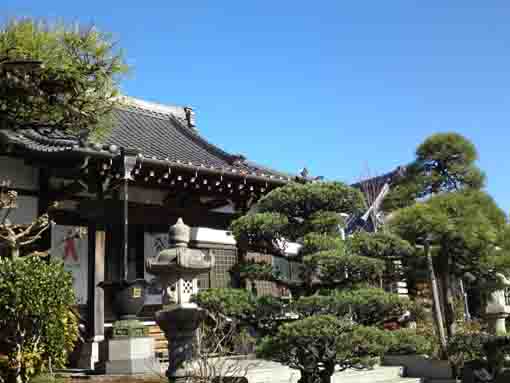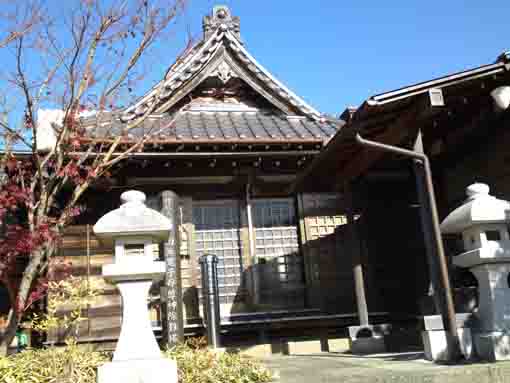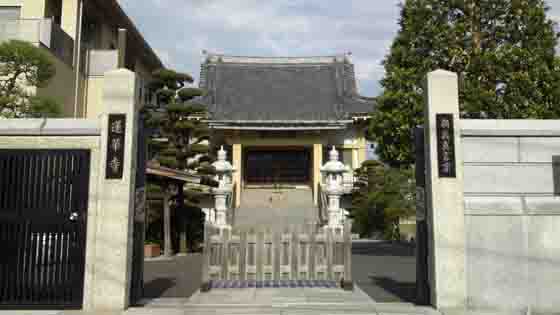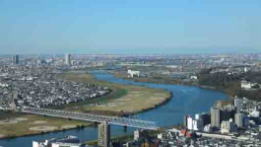Nakayama is in between Narita And Haneda International Airport
<クッキーについての同意並び欧州居住者向けプライバシーポリシー>
中山・下総・散歩道
Honkosan Joryuji Temple tells the History of Ichinoe




Honkosan Joryuji Temple was built by Zusho Tajima who had cultivated Ichinoe in Edo period, and it is very beautiful temple with many green pine trees that tells the history of this area. In addition, it is good for visitors to know the history deeply when they visit Ichinoe Nanushi Yashiki Residence at the same time since Tajima Family had lived it. Moreover, it is said that the statue of Kishimojin dedicated in Kishimojindo Hall in Joryuji temple was carved by Denkyo Daishi.
Why don't you visit Honkosan Joryuji Temple?
Honkosan Joryuji Temple
Honkosan Joryuji Temple
Joryuji Temple was built in 1628 by Zusho Tajima who had cultivated this area, it was named Honkosan Joryuji Temple belonging to Nichiren Sect. It is a branch temple of Hondoji Temple in Hiraga, Matsudo-shi, Chiba-ken. Moreover, there is a hall dedicating the statue of Kishimojin in the temple.The Grave of Zusho Tajima as a historic site registered by Edogawaku
Zusho Tajima was a settler who cultivated Ichinoe and he was the ancestor of Tajima Family having lived in Ichinoe Nanushi Yashiki. According to the orally handed down family history, Zusho was a retainer of Toyotomi Clan and his name was Morishige Zusho Hotta at that time. After the battle at Sekigahara in 1600, he lost the battle and escaped from the battlefield. At last, he reached at Osugi in Nishi Ichinoe Village and he stayed at Shobei Tajima's house. He changed his neme Hidetake Zusho Tajima and he worked hard cultivating the land in Ichinoe. Therefore, he became the pioneer of Ichinoe. Zusho became a Buddhist named Shozenin Nichikei and he built Joryuji Temple. In December 25th of1662, he passed away. His grave is in the central part of the graveyard behind the statue of the seated Shaka Nyorai, the grave stone looks like putting on a cone-shaped hat was scribed his Buddhist name 'Myo Ho Sho Zen In Nichikei' on.The Statue of the Seated Shaka Nyorai registered as a cultural asset by Edogawaku


It was produced by a carpenter Sanzaemon in 1673. It was 3 meters tall stone statue include the height of its pedestal. It was carved on a stone. According to phrases carved on the pedestal, it was donated by Shigenobu Hachibeinojo Tajima for his ansestors and people in the world gaining the divine favor of Buddha. It is a sculpture of fine workmanship and it looks expressive.
昭和63年3月
江戸川区教育委員会
本高山城立寺門前案内板より
引用、抜粋並びに参考
本高山城立寺門前案内板
本高山城立寺鬼子母神堂前案内板
江戸川区ホームページ
ウィッキペデイァ
The Location and Access to Honkosan Joryuji Temple
Honkosan Joryuji Temple

The map to the noted spots near Ichinoe Station
PDF of the map to the noted spots near Ichinoe Station- Honkosan Joryuji Temple has great accessibilities from both Narita and Haneda International Airport.
- From Narita International Airport, take Sobu Express Line bound to Tokyo or Yokosuka and get off at Funabashi Sta, then transfer the line to Sobu line bound to Nakano or Mitaka ang get off at Motoyawata Sta. Or take Keisei-line bound to Ueno and get off Keisei Yawata Sta. Both from Motoyawata Sta and Keisei Yawata Sta, transfer the line to Toei Shinjuku line and get off at Mizue Sta.
- From Haneda International Airport, take Keikyu-line bound to Narita, and get off Shinagawa Sta and transfer the line to Sobu Express line bound to Narita International Airport or Chiba, and transfer the line at Ichikawa Sta to Sob line bound to Nishi Funabashi, Tsudanuma or Chiba and get off at Motoyawata Sta. Or take Keikyu-line bound to Narita, and get off Keisei Yawata Sta. Both from Motoyawata Sta and Keisei Yawata Sta, transfer the line to Toei Shinjuku line and get off at Mizue Sta.
- From Iwamotocho Station at Akihabara, take Toei Shijuku line bound to Motoyawata and get off Mizue Sta.
- Take 13 minute walk from Mizue Sta.
- 2-39-28 Harue, Edogawaku, Tokyo
The Noted Spots around Funabori, Ichinoe and Kasai

The Observatory on Tower Hall Funabori
Visitors could enjoy seeing some special views of Tokyo.
A Walk Along Shinkawa River
There are some Edo style, some wooden buildings and thousands of cherry trees along the river.
Thousands of Cherry Trees along Shinkawa River
In spring, thousands of sakura along it beautifully bloom.
Shinkawa Nishi Suimon Hiroba Plaza
There are a Edo style fire lookout and an old lock gate in the plaza.
Furukawa Water Park
It is the first water park in Japan and a famous spot for viewing Sakura and hydrangeas.
Honkakusan Myoshoji Temple
There are some seasonal flowers blooming in every season, sakura especially blooms beautifully.
Ninoe Jinja Shrine
There are several tall pine trees and a 500 years old giant zelkova tree in the shrine.
Kaishosan Rengeji Temple
The principle image is the statue of Sho Kanzeon Bosatsu carved by Gyoki.
Kumano Jinja Shrine
There is a stone tablet scribing a haiku poem written by Basho Matsuo.
The Remain of the Ferry at Imai
The ferryport at Imai is appeared on an essey written by Socho, a renga poet in Muromachi period.
Ichinoe Sakaigawa Water Park
The park has many sakura and seasonal flowers, visitors could enjoy all seasons.
Iousan Myouonji Temple
It has the legend 'the One-eyed Crucial Carps' telling the miracle power to cure eye disease.
Ichinoe Makkotei Residence Park
In spring, weeping cherry trees bloom, in fall, colored leaves decorate the garden.
The Residence of Ichinoe Nanushi Yashiki
The traditional Japanese style residence with a thatched roof.
Honkosan Joryuji Temple
It is an important temple to know the history of Ichinoe area.
Chogyosan Daiunji Temple
It has tombs of Kabuki Yakusha and it is called Yakushadera.
A Walk Along Edogawa River
The areas along the river have many noted spots that people could enjoy history and culture.
A Walk Along Shinnakagawa River
There are some historical and cultural spots along the river.- 広告 Advertisement -
